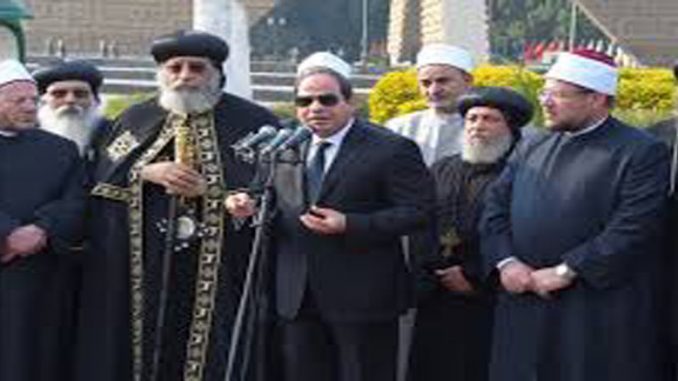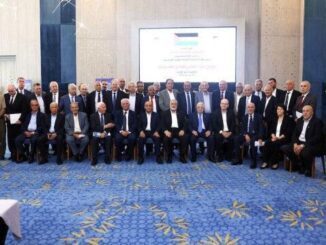
The young man – who was accused by the Al-Sisi regime of bombing the St. Mark church – was previously arrested in 2014, but he was later released, and left for Sudan, according to his family.
Egypt’s Abdel Fattah al-Sisi said on Monday a suicide bomber carried out the attack that killed 24 people at Cairo’s Coptic cathedral, the deadliest on the Christian minority in years.
Speaking at a state funeral for the victims, Sisi said four people had been detained, including a woman, and security forces were seeking two more people believed to be involved.
Sisi, who said the bomber was a man wearing a suicide vest, said: “The attack brought us great pain but we will never be torn apart. We will only be much stronger. We will hold steadfast and, God willing, we will succeed.”
The bomber‘s sister talking about her brother
Mahmoud Shafik Mohamed Mostafa was arrested by the police on Mach 14, 2014 and the authorities then accused him of violence but he was later released after staying in custody for 55 days.
Mahmoud’s sister said in a phone call to “90 Minutes” talk-show program at Egypt’s Al-Mehwar private TV channel, that her brother left for Sudan a little time after he was released, and that he had nothing to do with the bombing of the church. She also said the photo circulated on the social networking sites does not belong to her brother. The bomber‘s sister also confirmed that the features of the body shown in pictures are not her brother’s, stressing that he is “outside Egypt”.
What does Shafik’s mother say?
Mahmoud Shafik’s mother said her son had been brillint academically and achieved the fifth position in the high school certificate results in Fayoum goverorate. She pointed out that ‘Mahmoud’ was arrested while he was going “to study his lessons” as he was a secondary school student in 2014, and was accused of possessing a machine gun. But after he remained in custody for 55 days, he was released.
Mahmoud’s mother said in an interview with ‘On-TV’, an Egyptian private TV channel close to the regime, on Monday, that after her son’s release, he joined the Faculty of Science. Because he was occasionally arrested, Mahmoud decided to leave for Sudan to spare his little sisters the police’s repeated raids to arrest him.
She pointed out that he left the house a year ago in December 2015, adding that she did not see him since then though he often called them on the phone to check on them. She said the last time he talked with her on the phone was two weeks ago. She finally asked for allowing her to see the alleged body of her son so that she could decide if it was her son’s or not.
No group claimed responsibility
Security sources had said the blast was caused by a bomb containing at least 12 kg (26 pounds) of TNT detonated on a side of the church normally used by women.
Sisi did not name the organization the attackers were believed to belong to and no group has claimed so far responsibility. While Muslim Brotherhood strongly condemned the terror attack, the ISIS celebrated the attack on the social media. The Islamic State’s Egyptian branch previously claimed attacks in Cairo and urged its supporters to launch attacks around the world as it goes on the defensive in its Iraqi and Syrian strongholds.
Al-Sisi concluded saying, “What happened is a strike by forces of evil who feel demotivated. But they will not be able to destroy our unity.”
Was Mahmoud Shafik the attack’s real perpetrator?
Egypt’s Criminal Lab was able to reach the identity of the St. Mark church through the “DNA”, said Al-Watan, an Egyptian private newspaper close to the regime.
“The Criminal Lab collected the remains of the body of the suicide bomber and placed them on a template to show his features. Comparing the features with the pictures of registered criminals and the wanted for the police, the bomber was recognized, his father and mother were summoned, and a “DNA” analysis was conducted to confirm his identity. Finally, it was ascertained that Mahmoud Shafik was the perpetrator,” the pro-regime newspaper explained.
According to DNATesting.com, the DNA tests take up to two business days, starting from the day the lab first receives the samples. “The testing process for both legal and personal interests is the same,” the DNATesting.com said. The question now is: Was the church bomber actually identified through a DNA analysis only one day after the bombing while the testing process normally takes two business days?!



